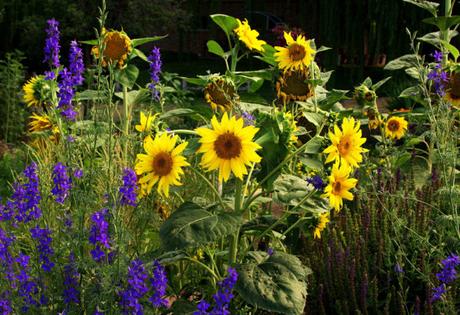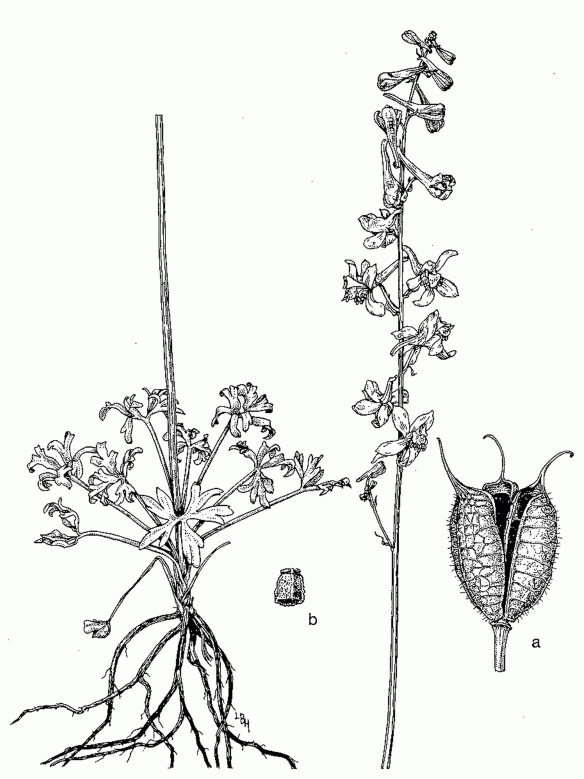Weed No. 4. Barestem Larkspur (Delphinium scaposum)
This is the most widespread of nine native Larkspur species in Arizona. Commercial seed packages often contain several of the species. Larkspur spreads across disturbed areas and flowers spring through summer. Plants are drought tolerant. New shoots from the plant’s root system form persistent colonies. My colonies have usually lasted only a year or two. I suspect that supplemental watering that benefits other flowers rotted the roots and prevented patch persistence and spread.
The plant’s foliage poisons cattle, but the flowers are fabulous insect magnets. Butterflies, bees, flies, and moths of many species like the nectar. Around my house, it’s the most popular flower for bumblebees including the big shiny black carpenters.

Larkspur (mostly at left) blends well with the Black-Oil Sunflowers that volunteer in places where I feed birds. (Photo: GR)

Barestem Larkspur (Delphinium scaposum). This gray-green perennial reproduces from seed and from clusters of dark woody roots. The stems reach ½ to 2 ½ feet high. Flowers are vivid royal blue with long basal spurs. A. Seed pod (3/8 to ¾ inches long). B. Seed (1/8 inch). (Drawing used with permission of the University of Arizona Press.)

